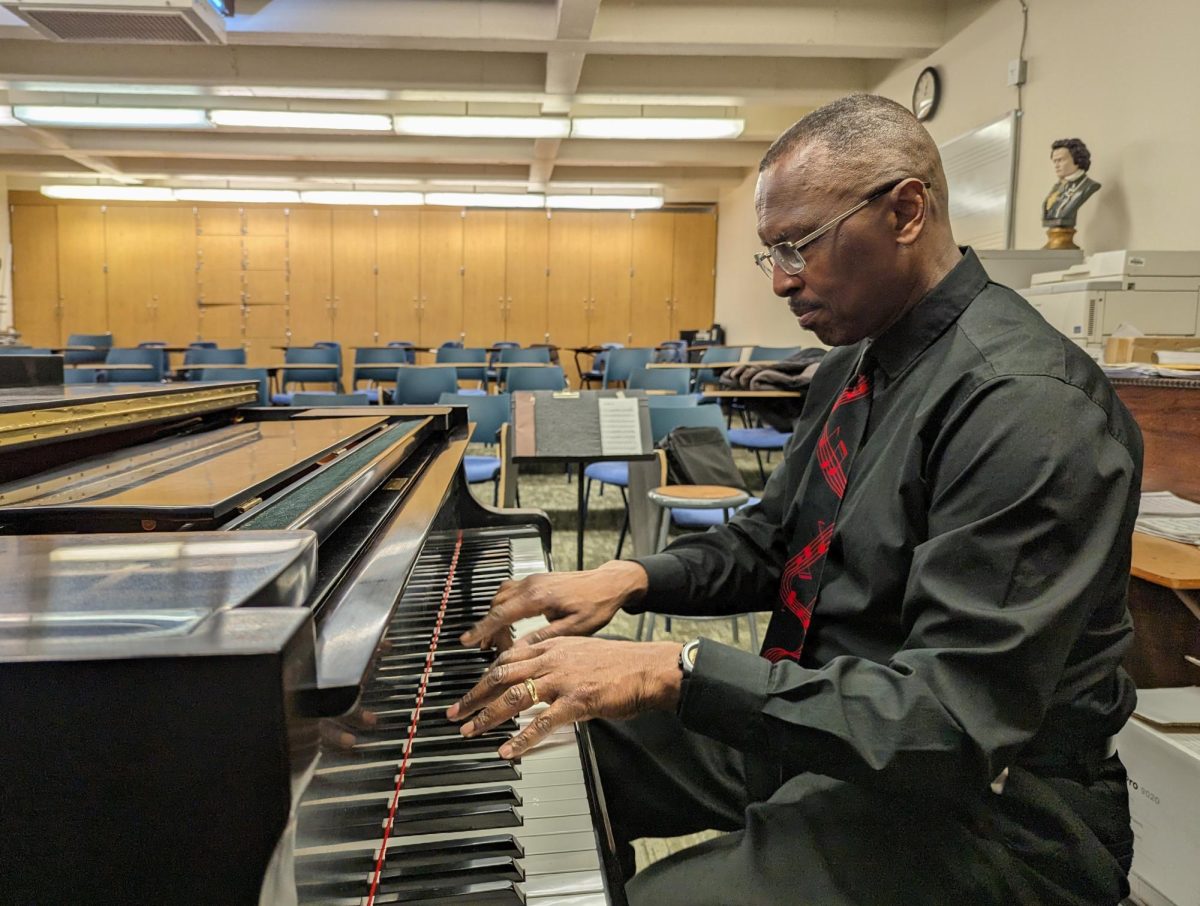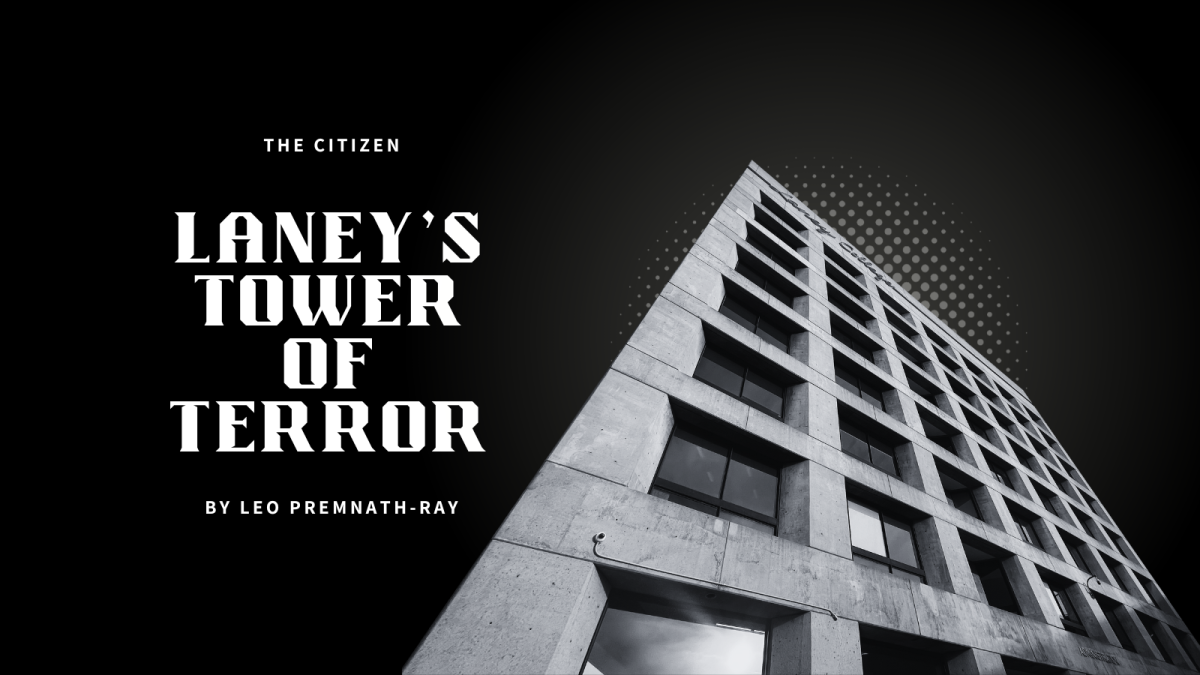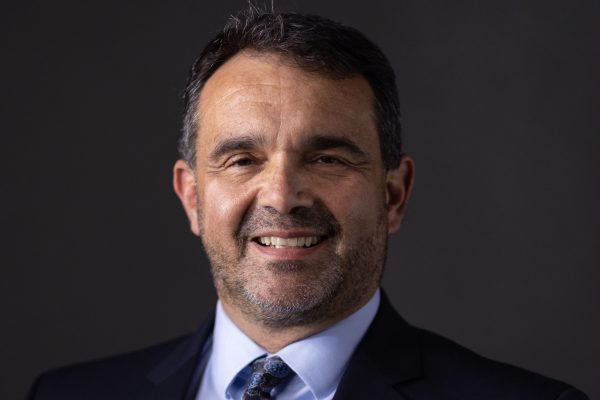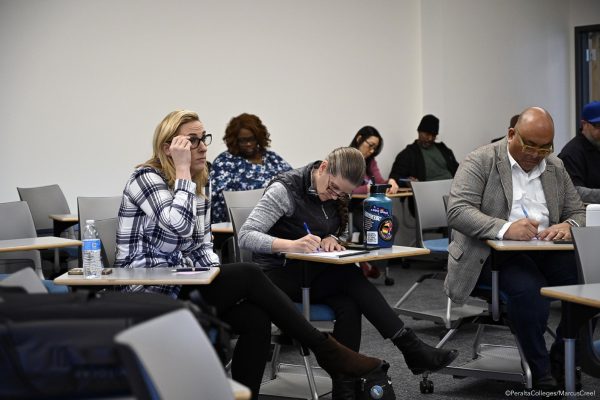Alameda County Sheriff Derek Pope set a grave tone for the Laney College Safety Training on Nov. 9: “[Campus shootings] are happening; they can happen; they’re gonna happen again; and you need to accept that.”
More than ever, safety training for active shooter situations — like the one Pope held in the Laney College Forum — is desperately needed. In 2015 alone, there have been 23 school shootings on college campuses, four of which took place at community colleges. Just two months ago, on Sept. 3, two students were injured and one was killed at Sacramento City College.
News Analysis
However, at Laney’s safety training, not even half of the vast Forum was filled. Is the school really prepared to handle an “active killer” on campus?
Pope began the training by outlining the shift away towards this term — “active killer” — and away from the term “active shooter,” pointing to incidents on college campuses involving swords, knives, and other deadly weapons.
These kinds of incidents can be threatening in a different way: people don’t have the distinctive sound of gunshots to warn them from a distance.
Pope also pointed out that, even when the active killer is a shooter, many people don’t recognize the sound of gunshots, since they think guns sound like they do in the movies.
One student brought up the introduction of “shot spotters” around the city of Oakland and hoped they would be installed at Laney. These “shot spotters” are microphones set up at strategic locations around the city. When these microphones hear a gunshot, they send an alert to police and are even able to recognize the kind of gun being fired. Pope wasn’t sure whether Laney College already employed the technology.
Pope then spent a large amount of time describing the physical and psychological profiles of potential active killers. “If you see someone that’s acting suspicious — wearing heavy clothing at a time when maybe it’s warmer, or if they’re carrying a backpack that looks extremely heavy — that’s someone you would want to bring attention to law enforcement,” he said.
He also emphasized the importance of campuses prioritizing mental health services in order to prevent incidents before they happen. He characterized potential active killers as “abnormal” and “off,” urging that college communities should, when possible, “intervene to get that person the help that they need.”
Yet according to the U.S. Department of Health & Human Services, “only 3 to 5 percent of violent acts can be attributed to individuals living with a serious mental illness.” Instead, “people with severe mental illnesses are over 10 times more likely to be victims of violent crime than the general population.”
Pope spent so much time discussing psychology and displaying news clips about active killer events that one visibly concerned audience member stopped him midway through his presentation.
“I’m sure you’re going to get to this at some point,” she said, “but if somebody came in the door right now with a gun, what would we be doing? Jumping under the chairs or what?”
“Well, the good news is I’m here,” he said.
Three armed police officers also stood at the base of the Forum’s stairwells, clearly prepared for any kind of incident.
But the value that comes with a safety training like Pope’s is preparing individuals for situations in which there is no trained police officer to help.
“When you get to a classroom,” he said, “you gotta say, okay, if there’s an earthquake, what do I do? If there’s a fire, what do I do? If somebody comes through that door with a gun, what do I do? I hear gunshots out there, what do I do? How do I get out? What are my options?”
Pope then showed a dramatic video produced by the U.S. Department of Homeland Security, explaining how to deal with an active killer situation.
Firstly, if possible, run, leave your belongings behind, help others escape if possible, and call 911 once you’re safe.
If you can’t run, then hide — preferably somewhere out of view. Lock or barricade the door, and turn off any lights, cell phones, or other devices that might indicate your presence.
Finally, as a last resort, take action against the person, especially if you are with others. Act aggressively, improvise weapons from what you have around you, and commit to your actions.
Pope also emphasized the value of barricading doors in any situation, especially if you’re in a room with only one exit.
“They know that [law enforcement is] gonna respond, they know they only have a few minutes, and they know they want to kill as many people as possible,” he said. “So if they come to a barricaded door, they’re gonna move along.”
Pope’s presentation provided highly valuable information like this, for dealing with active shooter situations. But when an event like this is so poorly attended; when the last active shooter training took place over three and a half years ago; and when the resources on campus already available to students are lacking, it can be difficult for the Laney community to feel like their college is keeping them safe.
At the safety training, another student brought up concerns about fast drivers potentially hitting students crossing Seventh St., from the campus to the main parking lot. Phyllis Carter, co-chair of the Health, Safety and Security Committee, promised she’d look into it.
Carter also brought up that she was aware of the issue surrounding the emergency phones placed around campus, many of which are broken, including some in the campus’s darkest and most dangerous areas.
Carter said that plans were in place to fix the emergency phones, while also converting them into loudspeakers that could broadcast loud alerts to anyone nearby. The ambitious idea, however, won’t help anyone who is attacked in the meantime.
Pope noted during his presentation that even though thinking about potential school shooters was unpleasant, the Laney community needed to prepare itself before incidents occurred.
Laney College and the district would do well to put his advice into practice when it comes to all of the safety issues facing its students, faculty, and staff — not just gunmen.
All of these issues are especially troubling since, according to the Oakland Police Department’s CrimeMapping website, in the three and a half years between the last safety training and Nov. 9, there have been 62 larceny thefts, 33 assaults, 27 motor vehicle thefts, and 15 robberies in just the few blocks surrounding Laney College.
The majority of these crimes — larceny thefts — don’t involve victims. They’re defined as the theft of something of value to their owner but without the object’s owner being involved.
Robberies are defined as theft of something from a person, whether using deadly force or not — although almost half of the robberies in the Laney College area involved firearms.*
The Oakland Police Department also includes a disclaimer on the website that notes that the data provided may not be complete; this means more incidents than the ones described above may have taken place.
*This includes the incident that took place on Oct. 21 involving two female Laney College students; more information.




























